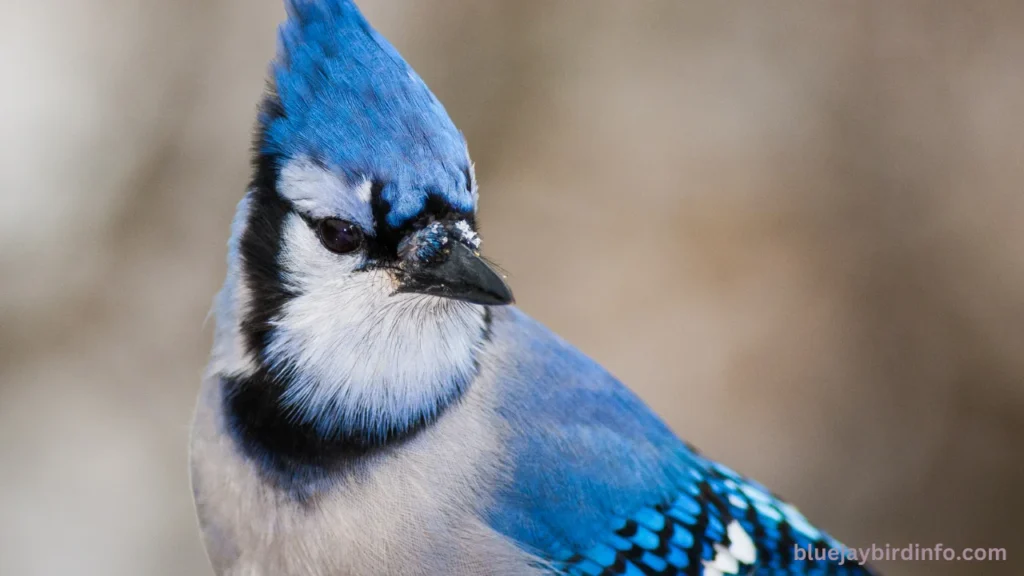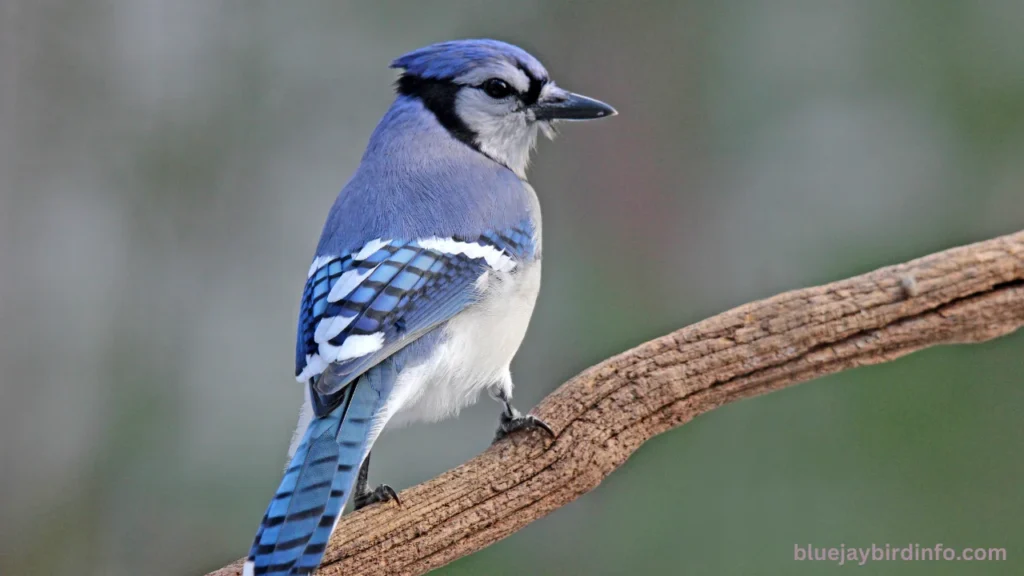Have you ever glanced out your window to spot a flash of blue, only to wonder—is that a bluebird or a blue jay?
While both are beloved visitors in North American backyards, these two brilliant blue birds couldn’t be more different. The bluebird, a symbol of happiness, quietly hops across lawns and sings softly, while the blue jay announces itself with loud calls and a striking crest.
It’s easy to see a streak of blue feathers and assume all blue birds are alike, but once you dig a little deeper, you’ll find their unique personalities and behaviors stand worlds apart.
The differences aren’t just in their colors or calls; they go much deeper. Bluebirds are gentle insect-eaters that nest in tree cavities, playing a critical role in controlling insect populations. Blue jays, on the other hand, are fierce protectors of their territory, known for their intelligence and adaptability.
They are even responsible for helping oak trees spread by hiding acorns that may eventually sprout into new trees. If you’re someone who loves spotting wildlife or simply enjoys watching birds from your backyard, learning the unique traits of these blue beauties can change the way you see them forever.
By exploring the physical differences, distinct behaviors, and ecological roles of bluebirds and blue jays, we can appreciate the complex roles each species plays in our ecosystems and maybe even inspire a new level of curiosity the next time you spot a flash of blue.
So, let’s dive in and discover what truly sets them apart—and see why knowing the difference is so much more than just a birdwatcher’s delight!
Contents
- 1 Physical Differences
- 2 Behavioral Differences
- 3 Ecological Roles
- 4 Geographic Distribution
- 5 Cultural Significance
- 6 Conclusion
- 7 FAQ’s
- 7.1 What are the main physical differences between bluebirds and blue jays?
- 7.2 How do bluebirds and blue jays differ in their behavior?
- 7.3 Where can I commonly find bluebirds and blue jays?
- 7.4 What ecological roles do bluebirds and blue jays play?
- 7.5 Are bluebirds and blue jays aggressive toward each other?
- 7.6 What is the cultural symbolism of bluebirds and blue jays?
Physical Differences
When it comes to appearance, bluebirds and blue jays each have their own striking beauty, but their physical differences are hard to miss once you know what to look for. Bluebirds are smaller, with a more delicate, rounded body shape and soft, muted colors.
They typically have a pale blue back, an orange or chestnut-colored chest, and a white belly. In contrast, blue jays are much larger, often more than a foot in length, with a bold, blue crest on their heads and striking black and white markings across their wings and tail.
The crest alone makes blue jays easy to spot, as bluebirds lack this feature entirely, making them appear more modest in comparison.
Not only do they differ in overall size and coloration, but their beaks and wing shapes also reveal clues about their lifestyle. Bluebirds have a slim, pointed beak, perfect for catching insects and eating berries. Blue jays, on the other hand, boast a thicker, more powerful beak, allowing them to crack nuts and seeds with ease.
Their wings and tail feathers are also distinct, with blue jays possessing longer, broader wings designed for powerful flight and maneuvering through dense woods, while bluebirds have more streamlined wings that suit their gentler, more fluttering flight patterns.
These physical features don’t just serve as identifiers—they also play important roles in the birds’ lives. For instance, plumage colors are used to attract mates, with both male bluebirds and blue jays showing off their bright blues during the breeding season.
However, the bolder black markings of blue jays also help them appear more intimidating to potential predators. These details remind us that, while both birds share the blue hues that make them memorable, each has evolved with specific features to fit their unique needs and environments.
Behavioral Differences
When it comes to behavior, bluebirds and blue jays might share a color, but that’s about where the similarities end. Bluebirds are generally more gentle and quiet, spending their days foraging for insects and berries.

They’re often seen perched low to the ground or hovering briefly as they catch their prey. In contrast, blue jays are known for their bold personalities and territorial nature. They forage not only on the ground but also in trees, where they’ll noisily gather nuts, seeds, and even small animals like insects and frogs.
Blue jays have even been observed hiding acorns in various locations, which helps to spread oak trees—a behavior that’s beneficial to the forest ecosystem.
Nesting habits are another area where their differences shine. Bluebirds prefer more secluded nesting spots, often choosing tree cavities or nesting boxes to keep their nests safe from predators. They’re relatively solitary, pairing up during the breeding season but otherwise keeping to themselves.
Blue jays, on the other hand, build large, open nests in tree branches and are highly social, often forming small family groups or flocks. These social bonds are particularly noticeable when they come together to mob predators like hawks or owls, using their sharp calls to alert each other to threats.
Speaking of vocalizations, blue jays are famously loud, with a wide range of calls that include everything from alarm cries to mimicry of hawk sounds—a tactic that likely helps them scare off other birds and potential predators.
Bluebirds, in contrast, have softer, more melodic songs that often go unnoticed unless you’re listening carefully. These unique vocal patterns not only set each species apart but also highlight their distinctive roles in their habitats.
Blue jays serve as forest watchdogs, alert and loud, while bluebirds blend quietly into the landscape, each bird adapted to thrive in its own way.
Ecological Roles
In the world of birds, bluebirds and blue jays play distinct yet complementary roles in their ecosystems, each suited to their preferred habitats and behaviors. Bluebirds thrive in open fields, meadows, and orchards, where they help control insect populations by feasting on beetles, grasshoppers, and caterpillars.
This natural pest control benefits the plants around them, making bluebirds essential allies for farmers and gardeners. Their quiet presence in these areas contributes to a balanced ecosystem, as they focus on a diet that helps limit insect overpopulation.
Blue jays, on the other hand, are forest dwellers who take on an entirely different set of responsibilities. They’re known for collecting and burying acorns, unintentionally aiding in the growth of new oak trees.
This process, known as seed dispersal, is crucial for forest regeneration, making blue jays an important species for maintaining the health and diversity of woodland areas. Unlike bluebirds, blue jays are more adaptable and thrive in both forests and suburban areas, where they adjust their foraging habits to fit whatever resources are available.
Although these birds often inhabit similar ranges, they tend to avoid direct competition due to their different feeding preferences and nesting behaviors. Bluebirds stick to open areas, while blue jays prefer woodlands, reducing overlap and minimizing potential competition.
In fact, their roles can be seen as complementary; as blue jays protect forests by spreading seeds and alerting other animals to danger, bluebirds work to keep insect populations in check. Together, these beautiful blue birds each contribute in unique ways to the ecosystems they inhabit, showcasing the intricate balance of nature where every bird, big or small, has a part to play.
Geographic Distribution
When it comes to geographic distribution, bluebirds and blue jays both span wide areas across North America, but their ranges and habitat preferences set them apart. Bluebirds can be found across much of the United States and southern Canada, though they’re split into three main species: the Eastern Bluebird, Western Bluebird, and Mountain Bluebird.
These species occupy different regions based on climate and habitat—Eastern Bluebirds prefer deciduous forests and open fields in the eastern U.S., Western Bluebirds are common along the West Coast, and Mountain Bluebirds favor high-altitude areas in the Rockies.
Their distribution is largely influenced by open areas with suitable nesting sites like tree cavities, which provide safe spots for raising young.
Blue jays, in contrast, have a more continuous range and are typically found throughout eastern and central North America. They thrive in woodlands, suburban parks, and even urban neighborhoods, adapting to areas with trees for nesting and foraging.
Climate plays a role here too, as blue jays are less likely to migrate and instead are known for sticking around year-round, even in colder regions. Bluebird populations, however, often shift seasonally, with many migrating south in the winter to avoid the harsher climates of northern areas.
Although their ranges overlap in much of the U.S., these birds tend to separate by habitat due to their different nesting and foraging needs. Historical changes to landscapes, such as the clearing of forests for agriculture, have also shaped their distribution—bluebirds have benefited from the availability of open spaces, while blue jays adapt well to remaining wooded patches and suburban areas.
Together, their adaptability and unique distribution patterns showcase how each species has carved out its own space in North America’s varied environments, living side-by-side yet thriving in distinct ecological niches.
Cultural Significance
Bluebirds and blue jays hold a special place in cultural traditions and folklore, with each bird symbolizing different values and beliefs across societies.
Bluebirds have long been associated with happiness, hope, and renewal; they appear as symbols of joy in Native American mythology and European folklore, often believed to bring good fortune or signal the arrival of spring.
The saying “bluebird of happiness” reflects this enduring cultural association, as bluebirds inspire optimism and warmth with their gentle presence and soft songs.
Blue jays, on the other hand, are often seen as symbols of courage, resourcefulness, and intelligence. Native American legends portray the blue jay as a clever, determined bird, sometimes known for its trickster nature.
This feisty and adaptable bird has also come to represent communication and loyalty due to its social bonds and vocal nature. While not always seen as a purely positive figure, the blue jay’s resilience and boldness have made it a symbol of strength and adaptability in various cultures.
However, the impact of human activities is placing pressure on both species. Habitat loss from urban development and deforestation threatens bluebirds, which rely on open spaces with ample nesting sites.
Conservation efforts like the installation of bluebird boxes have helped, but challenges remain. Blue jays, though more adaptable, are not immune to the effects of climate change, which is altering their food sources and migration patterns.
As these cultural symbols face environmental changes, their presence in our backyards reminds us of the delicate balance we share with nature and the importance of preserving these beloved birds for future generations.

Conclusion
In summary, bluebirds and blue jays are fascinatingly unique birds that share a striking blue color but differ in almost every other way. Bluebirds are smaller, with softer coloring and a gentle personality, thriving in open fields and meadows where they play a crucial role in controlling insect populations. Blue jays, on the other hand, are larger, bold, and noisy, easily identifiable by their crested heads and powerful beaks.
They make their mark in forested habitats as essential seed dispersers, particularly for oak trees, contributing to forest health and regeneration. While their ranges overlap across much of North America, bluebirds and blue jays occupy different ecological niches and bring unique qualities to their respective environments.
Understanding the distinctions between these two species enhances our appreciation for the diversity of birdlife and the vital roles each bird plays in its ecosystem. By recognizing these differences, we not only deepen our connection to the natural world but also become more mindful of the delicate balance that allows each species to thrive.
Both bluebirds and blue jays symbolize resilience and beauty in their own ways, reminding us of the diverse roles that wildlife fulfills.
So next time you spot a flash of blue, take a moment to observe and appreciate which of these blue beauties has visited. By supporting conservation efforts and maintaining natural habitats, we can help ensure that both bluebirds and blue jays continue to flourish, enriching our landscapes and ecosystems for generations to come.
Also, read other articles related to Blue Jay Habits!
FAQ’s
What are the main physical differences between bluebirds and blue jays?
Bluebirds are smaller with rounded bodies and soft, pale colors, while blue jays are larger, more robust, with bold blue and black markings and a crest.
How do bluebirds and blue jays differ in their behavior?
Bluebirds are quiet, gentle insect-eaters, while blue jays are loud, social, and have diverse diets, including seeds and small animals.
Where can I commonly find bluebirds and blue jays?
Bluebirds are found in open fields and orchards across North America, while blue jays prefer woodlands, parks, and suburban areas in the eastern and central parts of the continent.
What ecological roles do bluebirds and blue jays play?
Bluebirds control insect populations, while blue jays disperse seeds, especially acorns, helping to sustain forest ecosystems.
Are bluebirds and blue jays aggressive toward each other?
These birds rarely compete directly due to different feeding and nesting preferences, though blue jays may defend their territories aggressively from other species.
What is the cultural symbolism of bluebirds and blue jays?
Bluebirds often symbolize happiness and hope, while blue jays represent intelligence, courage, and adaptability.








